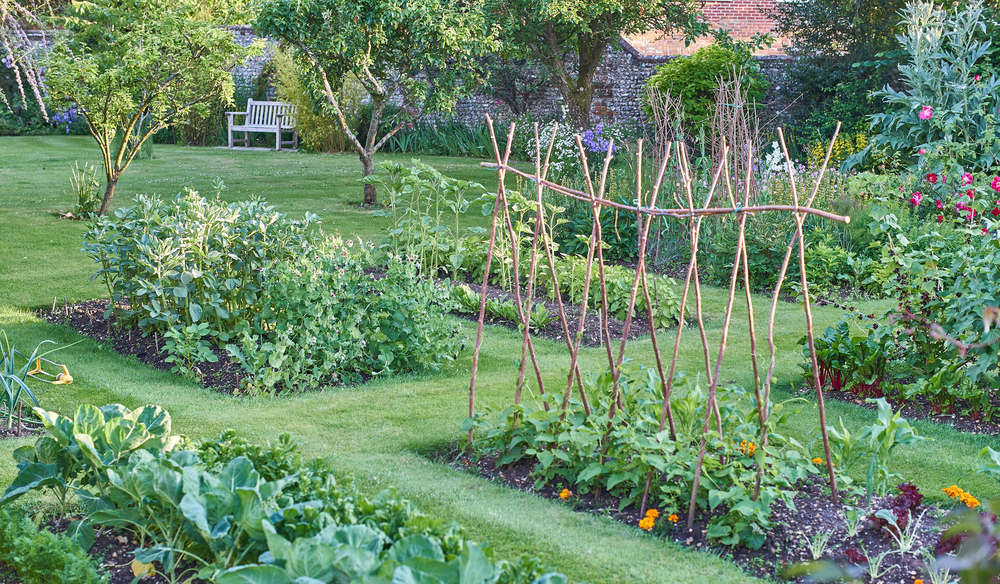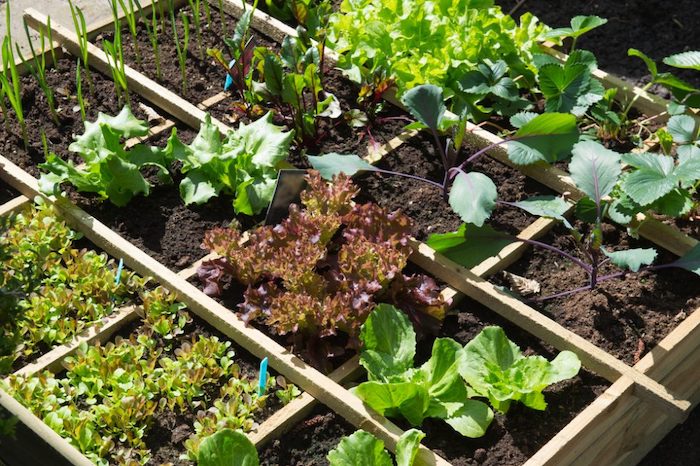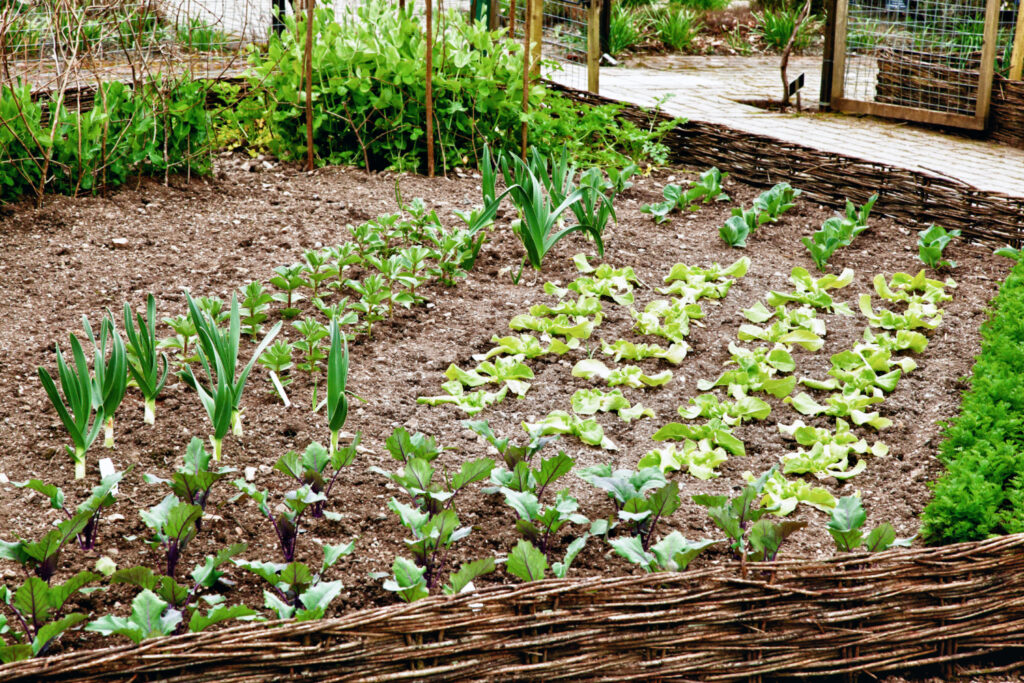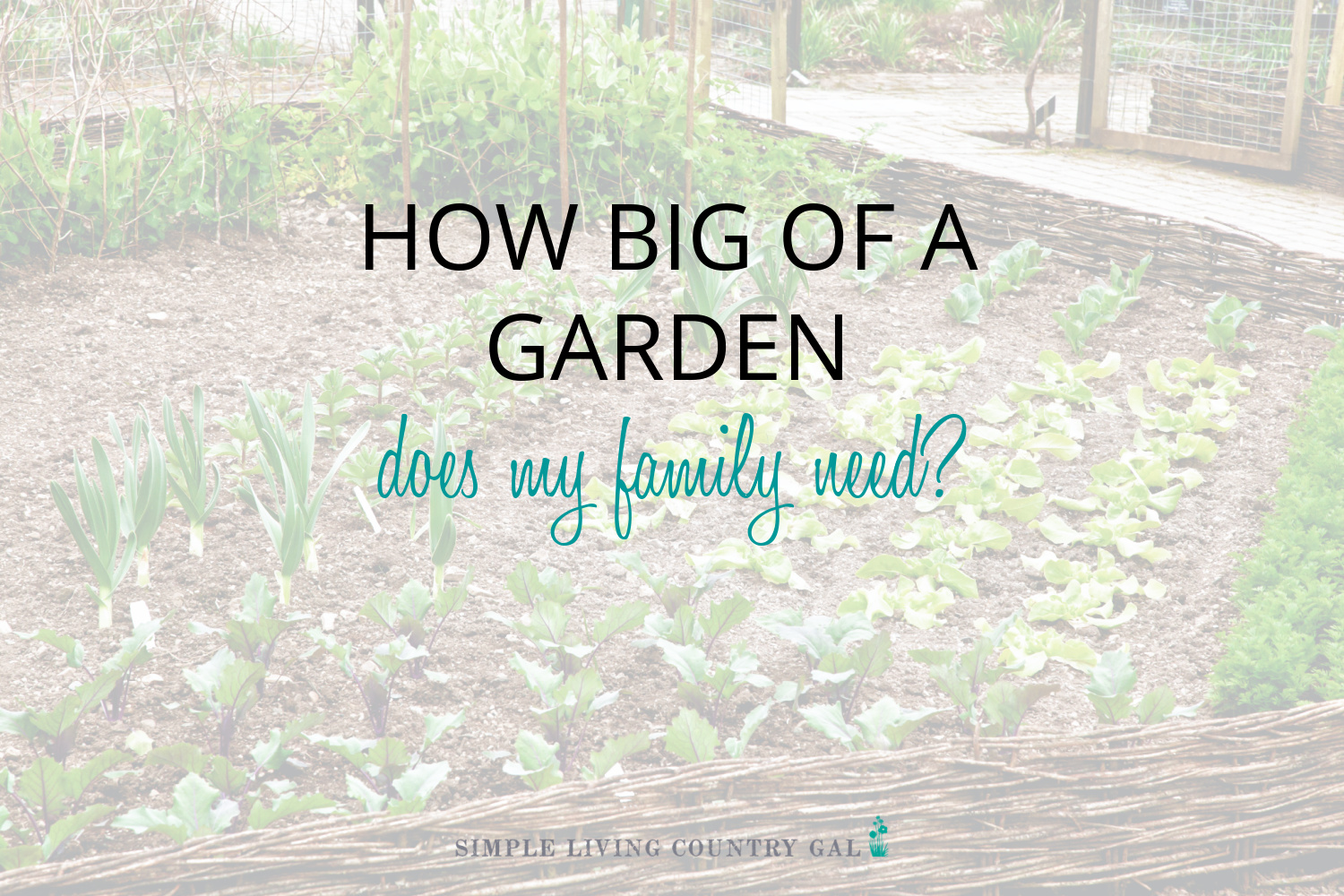Introduction
Gardening is a great way to produce your own food, but it can be difficult to determine how much land you need to dedicate to this pursuit in order to be self-sufficient. There are many factors to consider, including the climate you live in, the amount of sunlight your garden gets, and the type of plants you want to grow. With a little planning, you can figure out how big your garden needs to be in order to provide enough food for yourself and your family.
What to plant in your survival garden?

Having a survival garden is a great way to ensure that you have fresh, healthy produce and other essential items available in times of need. But it’s not as simple as just throwing some seeds in the ground. You need to plan what you will plant in your survival garden based on your climate, soil conditions, and the types of foods you like to eat.
First, you need to consider the type of plants that are best suited for your climate. Different plants require different amounts of sun, water, and soil nutrients to thrive. For example, some vegetables, such as tomatoes and peppers, require full sun, while others, like lettuce and spinach, prefer partial shade. It’s also important to consider how much space you have available for your garden. If you’re planting in a small area, you may need to choose plants that don’t require much space, such as microgreens or herbs.
Once you’ve decided which plants to grow, you’ll need to consider what type of soil you have. Different plants require different soil types, so it’s important to choose the right soil for your plants. For example, some vegetables, such as carrots and potatoes, need sandy soil, while other vegetables, such as beans and peas, prefer loamier soil. It’s also important to test your soil pH levels before planting to make sure that your soil is healthy and ideal for the plants you want to grow.
When it comes to what to plant in your survival garden, you should focus on plants that provide essential nutrients, such as fruits, vegetables, and herbs. Fruits and vegetables are great sources of vitamins, minerals, and antioxidants, while herbs can provide flavor and aroma to your meals. Some of the best fruits and vegetables to plant in your survival garden include tomatoes, peppers, onions, carrots, potatoes, squash, and cucumbers. Herbs such as basil and chives are also great additions to your garden.
To ensure a successful harvest, it’s important to water and fertilizes your plants regularly. Make sure to water your plants at least twice a week, and fertilize them once a month to provide essential nutrients. Finally, mulching your plants can help to keep weeds away and help conserve water.
By following these simple tips, you can ensure that your survival garden is a success. With the right plants, soil, and proper care, you can ensure that your garden is providing you with the essential foods and other items you need in times of need.
Planning Your Survival Garden Crops

Planning for a survival garden is a must for any prepper. If a disaster strikes and your food supply runs low, you’ll be thankful to have a survival garden to rely on for sustenance. But, before you can reap the rewards of growing your own food, you need to plan what types of crops will be most beneficial for your unique needs and situation.
When choosing the right crops for your survival garden, it’s important to consider factors such as your climate and soil type, the amount of sunlight you receive, the water supply, and the amount of time and effort you’re willing to put into the garden.
First, start with the basics:
● Consider the size of the space you have available for gardening. Choose crops that will fit your space and help you maximize the yield.
● Think about the climate and soil type in your area. Certain crops will do better in certain climates and soils than others, so make sure to research the best plants for your specific environment.
● Make sure to choose crops that are easy to grow and require minimal maintenance. This will help you devote more time and energy to tending to your garden without overburdening yourself.
● Select vegetables that are nutrient-dense and packed with vitamins and minerals. These will help ensure you get the most out of your survival garden.
Some of the best crops for a survival garden are tomatoes, peppers, carrots, potatoes, squash, onions, garlic, and lettuce. These crops are easy to grow, highly nutritious, and low-maintenance.
In addition to vegetables, consider adding herbs such as basil, dill, parsley, rosemary, and thyme to your garden. These herbs are versatile and can be used in a variety of recipes.
Finally, think about what type of fruits or berries you’d like to add to your garden. Some of the best options are blueberries, strawberries, and raspberries. These fruits are not only delicious but also offer a great source of antioxidants and vitamins.
When planning for your survival garden, it’s important to make sure to choose crops that are easy to grow and require minimal maintenance. This will help ensure that you are able to maximize the yield from your survival garden and get the most bang for your buck.

5 things to consider before deciding how much food you need to grow
Growing your own food is a rewarding experience that can save you money in the long run and provide access to fresh, nutritious produce. But if you want to make the most of your garden, it’s important to plan ahead and know how much food you need to grow. Here are five things to consider when deciding how much food to grow.
1. Space: The amount of space you have available to grow food will have a big impact on how much you can produce. If you are limited in space, consider growing vertically with trellises and other methods to maximize your yield.
2. Climate: Climate is an important factor when deciding how much food to grow. Different types of food require different amounts of water, sun, and temperature. Consider your local climate when selecting the types of food you want to grow.
3. Family size: Knowing how much food your family consumes on a daily basis is a great way to know how much you need to grow. If you have a large family, you may need to grow more food than if you only have a few people to feed.
4. Preferences: Consider what types of food your family likes to eat. Not everyone enjoys the same foods, so it’s important to consider everyone’s preferences when deciding what to grow.
5. Time: Growing food takes time, so consider how much time you can realistically dedicate to this activity. If you have limited time, consider growing fewer types of food or focusing on crops that don’t require as much maintenance.
By taking all the above factors into consideration, you can decide on the perfect amount of food to grow in your garden. Growing your own food is a great way to save money and ensure you’re getting the freshest produce available. Good luck and happy gardening!
How Much Food Can You Grow in a Small Garden?

How much food you can grow in a small garden depends on a number of factors, including the amount of space you have, the type of crops you want to grow, and the climate you live in. In general, however, you can expect to yield about one pound of food per square foot of garden space.
So, for example, if you have a 10×10 foot garden, you can expect to harvest about 100 pounds of food from it. This may seem like a lot, but keep in mind that most fruits and vegetables are about 90% water by weight. Once they’re cooked or processed, that percentage drops even lower.
Of course, there are always exceptions. Some crops are more space-efficient than others. For example, leafy greens like lettuce or spinach can be grown very densely and will yield more food per square foot than something like tomatoes or potatoes. And certain crops (like grains) are only practical to grow if you have a larger area to work with.
Bottom line: how much food you can grow in a small garden varies depending on a number of factors. But in general, you should expect to yield about one pound of food per square foot of garden space.
The Average Household Garden Size
The size of a garden is often determined by the amount of available space and the needs of the gardener. A large garden may be needed to provide enough food for a family, while a small garden may be all that is available or all that is needed. The average household garden size in the United States is 16’x10′, or 160 square feet. This size garden will provide enough fresh produce for a family of four with some left over to can or freeze for later use.
How Much Food Can You Grow in a Large Garden?
The size of your garden will, of course, directly impact how much food you can realistically grow. A smaller plot can still produce a significant amount of food, but if you want to be self-sufficient, you’ll need at least an acre of land to provide for all your needs.
On a large scale, it’s possible to grow enough food to feed an entire family on just a quarter acre. This would require some serious planning and effort, but it’s doable. You would need to carefully select which crops you grow and make sure you are maximizing yield. For example, rather than growing corn in rows, you could opt for the Three Sisters planting method which combines corn, beans, and squash. This method is said to increase yields by up to 30%.
If you’re not interested in growing all your own food, but still want a large garden, consider planting a variety of fruits and vegetables. With proper care, you can easily yield 1-2 pounds of produce per square foot. So, if you had a 10×10 plot (100 square feet), you could potentially harvest 1000 pounds of food in a single season!
Conclusion
In conclusion, you need at least a 12×12 garden to survive. You will need to can or freeze your extras, and you might want to have a milk cow and some chickens for eggs and meat. This is the bare minimum. If you want to be more self-sufficient, you will need a larger garden and some additional animals.
